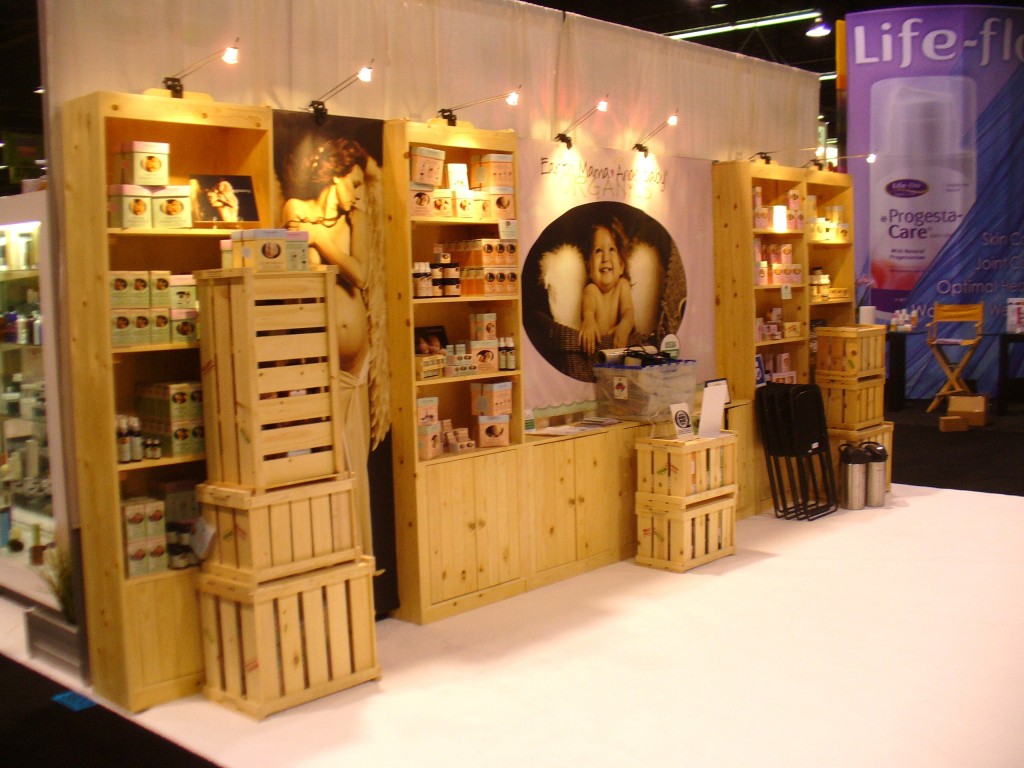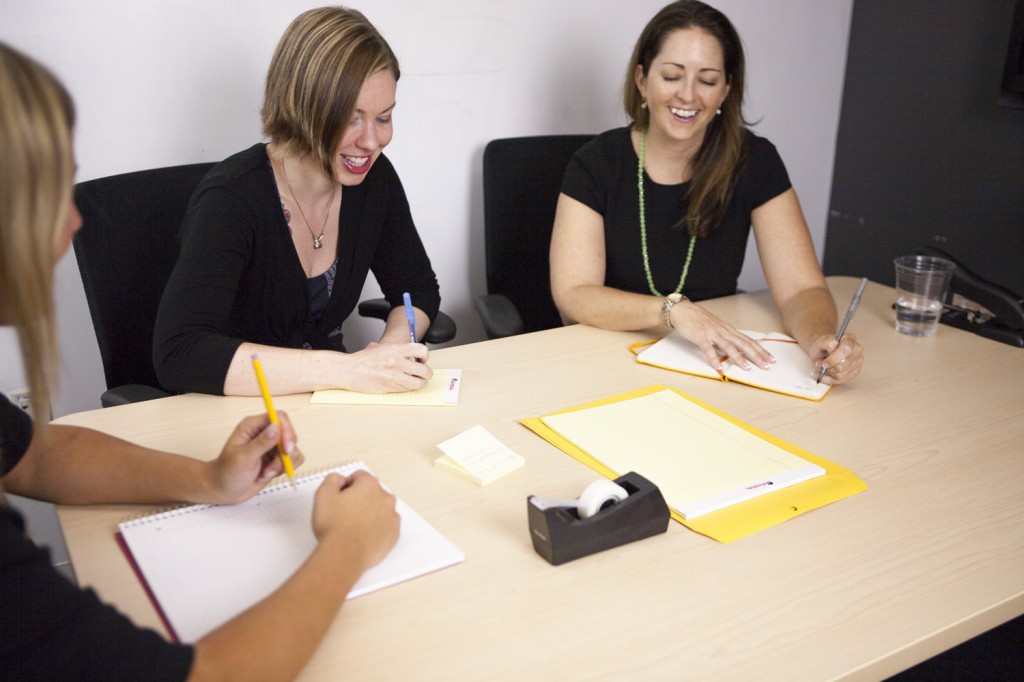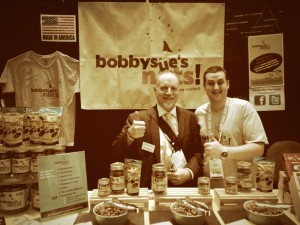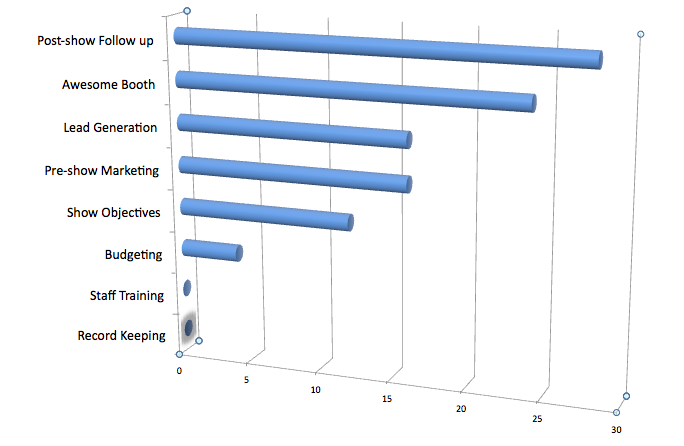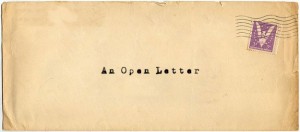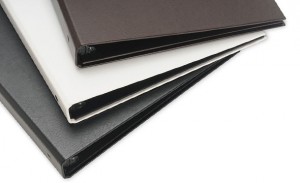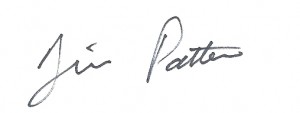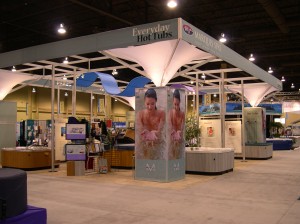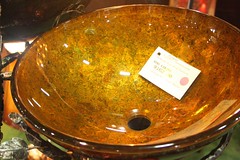Tradeshow Success is All About Attracting a Crowd, Then Knowing What to do with it
You may have a spectacular booth, a cool product and a well-trained staff. You may have a great spot on the floor near the main entrance. You may even have a special guest star in the booth for a few hours.
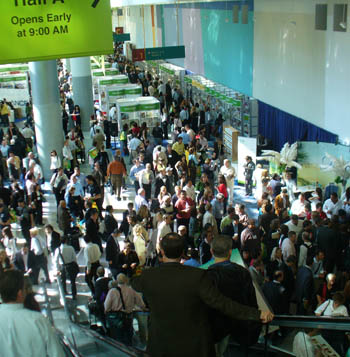
But all of that can go for naught if you can’t draw a mob on a consistent basis. In a recent meeting with a potential client, we asked the following question: when you get back to the office, what is the one thing that you would point to that would indicate your exhibiting experience was a success?
The answer? A sheer mob – almost all of the time.
So drawing a crowd is deemed important; probably the most important part of a tradeshow, in fact.
So how do you consistently draw a crowd to your tradeshow booth exhibit?
There are more ways to draw a crowd than there are ways to portray Dr. Who on television.
One favorite way is to hire a professional or two. Having a professional presenter in the booth that has the experience in attracting a crowd and informing that crowd about the exhibitor’s products and services is one of the most effective methods. The presenter can be an actor, presenter, magician, juggler, or unicyclist. Or maybe all at once!
Another way to attract a crowd is to have live music in the booth. This was done effectively at CES recently when large exhibitors were able to hire bands such as the Foo Fighters, Black Eyed Peas, Maroon 5 or others.
Okay, you don’t have that big of a budget or booth. So now what?
Some would shout the praises of money-blowing machines, prize wheels or free giveaways. But I would ask if these curiosity-arousing items are really attracting the right people. It depends on the show. CES is one place where a band would work. The local or regional industry show might be better for using a money blowing machine or prize wheel, but you would still want to have a method in place that allows you to ask attendees questions to quality or disqualify them as potential clients or customers.
As Anders Boulanger says in this great article, ‘do not leave free gifts out in a bowl for passer-by to grab and go. It is important that they don’t get it until they give something first,’ such as an email address, phone number or business card.
One way to attract a crowd is to have some sort of interactive element that relates to your product or service. If it’s software, for instance, you can offer a brief demo. If you’re selling iPad kiosks, have one or two that can show people how they work by opening them up and taking them apart. If you are promoting your service that helps put your company on the social media map, you can show attendees how it works with case studies and other demonstrations.
Or have an in-booth trivia game based on your company’s products and services. Every hour giveaway prizes to attendees that can answer the most questions based on the available handouts or brief onscreen interactive presentations.
What draws a crowd? In a word: curiosity.
Other methods of drawing a crowd can involve pre-show marketing or creating a buzz on social media outposts such as Twitter, which are heavily followed at most shows.
But there’s more to taking home a lot leads than drawing a crowd. If you hire a professional presenter that is prepared to draw dozens or hundreds of people to your booth two or three times an hour, is your booth staff prepared to sift through them and find the good hot leads, collect contact information and confirm the next step?
If not, what’s the point of drawing a crowd? Attracting a crowd isn’t hard. But making sure you have a system in place to benefit from that crowd is the very important second step to your tradeshow marketing success.

